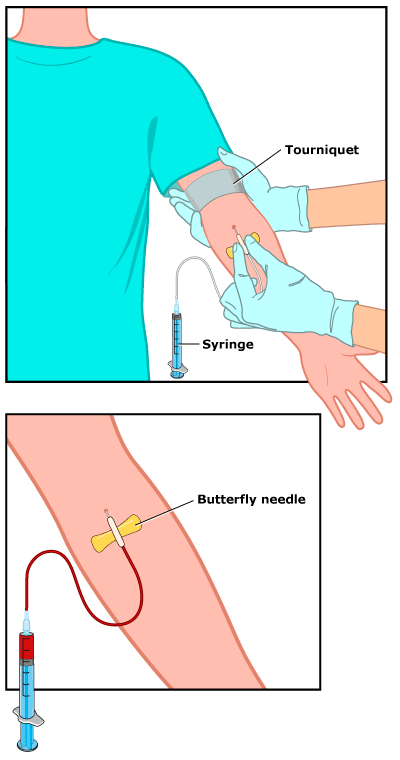Blood Test: Luteinizing Hormone (LH)
Article Translations: (Spanish)
What It Is
Luteinizing hormone (LH) plays an important role in sexual development and is produced by the pea-sized pituitary gland in the brain. An LH test measures the level of this hormone in the bloodstream.
In kids, LH levels are high right after birth, but then fall, remaining low until puberty approaches (usually between ages 10 and 14). At this time the hypothalamus, an almond-sized area of the brain that links the nervous system with the hormone-producing endocrine system, releases gonadotropin-releasing hormone (GnRH) that starts the changes of puberty. GnRH signals the pituitary gland to release two puberty hormones into the bloodstream: LH and follicle stimulating hormone (FSH).
In boys, LH and FSH work together to get the testes to begin producing testosterone, the hormone responsible for the physical changes of puberty and the production of sperm.
In girls, LH and FSH prompt the ovaries to begin producing the hormone estrogen, which causes a girl's body to mature and prepares her for menstruation.
Because LH and FSH work so closely with each other, doctors often perform these tests together, as well as tests for testosterone (the major male sex hormone) and estradiol (a form of estrogen, the major female sex hormone). Taken together, the results can often provide a more complete picture of a child's sexual maturation, and the well-being of the glands that produce these hormones.
Why It's Done
Doctors may order an LH test if a boy or girl appears to be entering puberty much earlier or much later than expected. High levels are associated with precocious (early) puberty, while low levels may indicate a delay in sexual development.
The test may also be used to check for damage or disease of the testes or ovaries, pituitary gland, or hypothalamus.
In adults and teens, LH levels can also help doctors evaluate fertility issues and menstrual problems.
Preparation
No special preparations are needed for this test. On the day of the test, having your child wear a T-shirt or short-sleeved shirt can make things easier for the technician drawing the blood.
The Procedure
A health professional will clean the skin surface with antiseptic, and place an elastic band (tourniquet) around the upper arm to apply pressure and cause the veins to swell with blood. Then a needle is inserted into a vein (usually in the arm inside of the elbow or on the back of the hand) and blood is withdrawn and collected in a vial or syringe.
After the procedure, the elastic band is removed. Once the blood has been collected, the needle is removed and the area is covered with cotton or a bandage to stop the bleeding. Collecting the blood for the test will only take a few minutes.

What to Expect
Collecting a sample of blood is only temporarily uncomfortable and can feel like a quick pinprick. Afterward, there may be some mild bruising, which should go away in a few days.
Getting the Results
The blood sample will be processed by a machine, and results are usually available in a couple of days.
Risks
The LH test is considered a safe procedure. However, as with many medical tests, some problems can occur with having blood drawn, like:
- fainting or feeling lightheaded
- hematoma (blood accumulating under the skin causing a lump or bruise)
- pain associated with multiple punctures to locate a vein
Helping Your Child
Having a blood test is relatively painless. Still, many kids are afraid of needles. Explaining the test in terms your child can understand might help ease some of the fear.
Allow your child to ask the technician any questions he or she might have. Tell your child to try to relax and stay still during the procedure, as tensing muscles and moving can make it harder and more painful to draw blood. It also may help if your child looks away when the needle is being inserted into the skin.
If You Have Questions
If you have questions about the LH test, speak with your doctor.
Note: All information is for educational purposes only. For specific medical advice, diagnoses, and treatment, consult your doctor.
© 1995-2024 KidsHealth ® All rights reserved. Images provided by iStock, Getty Images, Corbis, Veer, Science Photo Library, Science Source Images, Shutterstock, and Clipart.com

